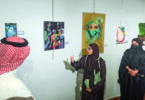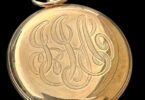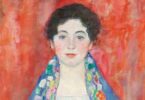ANKARA (Dailysabah): Prepared as part of the “Fabrics Atlas of Turkey” project, carried out under the auspices of first lady Emine Erdoğan, the “Fabrics Atlas Exhibition” was opened on July 22 in the Beştepe Exhibition Hall at the Presidential Complex in the capital Ankara.
The “Fabrics Atlas of Turkey” is a cultural project created with the aim of preserving and developing the weaving culture of thousands of years, which forms the memory of the Turkish nation, transferring it from generation to generation with social awareness and promoting it to the world. The “Fabrics Atlas Exhibition” is organized as the first event of the project.
In the exhibition, 151 types of weaving from different regions of Turkey are on display. The show also features Ottoman fabrics from the collection of collector Yusuf Iyilik. Designs of Mehmet Demir, Mert Çelebi, Senem Kula and Rümeysa Kış that carry traditional weaving into the future also take place in the time tunnel part of the exhibition. Besides, famous artists including Servet Senem Uğurlu, Aydın Uğurlu and Elisabeth Strub Madzar present their weaving arts to visitors in the exhibition.
Within the scope of the exhibition, panels under the titles of “Evaluation of Traditional and Local Weavings from Different Perspectives” and “Keeping A Culture Alive, Weaving Craft and Geographical Indications” will be held. Academicians, local government representatives, textile industry representatives, weaving masters, figures from the world of fashion and design will attend the panels.
Speaking at the opening ceremony, first lady Erdoğan said that the “Fabrics Atlas of Turkey” project brings the local weavings of Turkey together for the first time and the “Fabrics Atlas Exhibition” heralds that Turkish weaving art will be sustained without losing its importance. Expressing that weaving is the companion of human life and that all the turning points of life gained meaning with weaving, Erdoğan said: “Weaving does not consist of only threads and patterns. It is intertwined with life and left its mark in every part of it.”
Noting that Turkish weaving carries deep traces of the adventure of the nation, she added that the weavings that became famous in the Seljuk and Ottoman periods were known as “Turkish Fabric” in the world. Pointing out that there are dozens of Turkish weaving types that have been mentioned in the literature, the first lady said: “All these values have a route drawn on our geography. For example, the cotton thread of the Mediterranean, the wool of Eastern Anatolia and the silk of northwestern Bursa province are standouts. I believe that all these wonders will come to light again through this project.
“We need to keep our traditional arts alive, and we must also nurture the minds and souls of young generations with the rich world of meaning of these arts. No matter how the world changes, tradition, art, craft and local production must always survive. For this reason, I find the Fabrics Atlas of Turkey project extremely valuable.”
Telling that trends are changing at the speed of light in the modern world, Erdoğan congratulated those who contributed to the project. She continued: “Within the scope of the project, a very meticulous study was carried out to identify weavings belonging to seven regions of Turkey. Now, the textile and fashion world can embark on inspiring journeys on the route of these weavings in the ‘Fabrics Atlas Exhibition.’”
The exhibition can be visited six days a week for three months.






